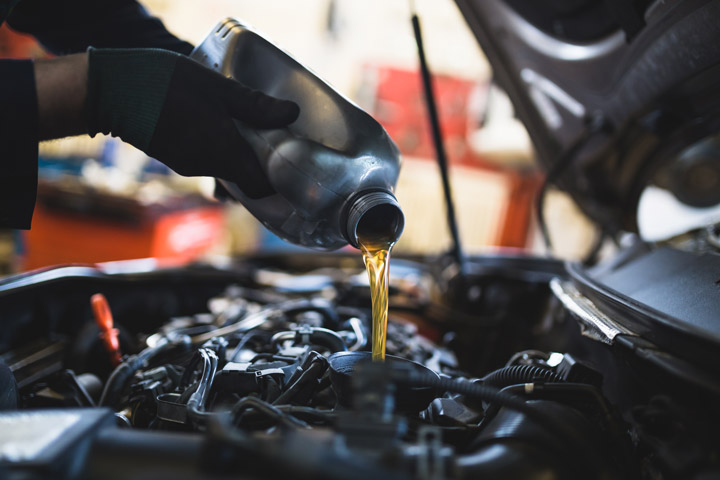All Categories
Featured

[/image]

Two key services that are commonly overlooked however have a significant effect on tire longevity and performance are tire turning and placement. Let's dive right into what tire rotation and positioning are and why they're crucial for your automobile.
What Is Tire Rotation? Tire rotation is the procedure of moving your tires from one setting to one more to ensure they put on evenly. Because your cars and truck's tires operate at various rates relying on their position (front tires versus rear tires), rotating them frequently helps to disperse the wear equally, causing a much longer life-span for your tires.
Tires on the front axle tend to use quicker than those on the rear axle, specifically in front-wheel-drive vehicles, where the front tires handle both steering and power. On the other hand, rear tires could put on unevenly relying on the car's weight distribution and driving conditions. By rotating your tires every 6,000 to 8,000 miles (or as advised by the supplier), you'll make sure a much more well balanced wear pattern.
What Is Tire Alignment? Tire placement, additionally called wheel alignment, describes adjusting the angles of your vehicle's wheels to the producer's specifications. Appropriate positioning guarantees that your tires are aiming in the ideal instructions, and it aids maximize tire life and enhance lorry handling. There are 3 main facets of positioning: camber, wheel, and toe.
Camber describes the tilt of the tires from the front of the lorry. If your tires are tilted way too much inward or external, it can trigger unequal wear. Caster describes the angle of the guiding axis when seen from the side of the cars and truck. This influences the security of the steering, particularly when driving directly. Toe describes the angle at which the tires point inward or exterior when viewed from above. This impacts just how your lorry tracks when traveling. An appropriate positioning makes certain that all four tires are directing directly ahead and are tilted correctly. Misalignment can result from striking potholes, visuals, or just from the wear of suspension parts gradually.
Why Tire Turning and Positioning Issue. Extended Tire Life. Both tire turning and alignment help avoid irregular tire wear. When your tires use uniformly, they last longer, which can save you cash in the long run by minimizing the requirement for premature substitutes.
Improved Security. Appropriate tire turning and placement improve car security and handling. Misaligned tires or unevenly worn tires can negatively influence your capability to guide and stop your car, especially in emergency circumstances. Routine maintenance guarantees your tires execute efficiently, supplying a safer driving experience.
Better Fuel Effectiveness. If your tires are not lined up properly, they may drag against the roadway surface area, creating resistance. This extra friction can decrease gas efficiency, creating your lorry to consume even more gas. Regular tire alignment makes sure that your lorry relocates efficiently, improving gas mileage.
Improved Comfort. Imbalance or erratically worn tires can bring about a rougher trip, as your car might pull to one side or create vibrations. By maintaining your tires rotated and straightened, you'll enjoy a smoother and much more comfy driving experience.
Signs That Your Tires Need Rotation or Alignment. It's necessary to remain alert for any type of indicators that your tires require turning or placement. Look out for these usual signs:
Uneven Tire Put On: If you discover that one tire is considerably much more worn than the others, it might be time for a rotation or positioning. Guiding Pull: If your auto draws to one side while driving right, this could show misalignment. Resonances: If you really feel resonances in the guiding wheel or the vehicle itself, it could be a sign of misalignment or uneven tire wear. Squealing Tires: Uncommon tire noise can also indicate incorrect positioning or the requirement for a tire rotation. How Often Should You Rotate and Straighten Your Tires? Tire rotation need to generally be done every 6,000 to 8,000 miles or as defined in your automobile's proprietor's guidebook. It's a great idea to turn your tires throughout every oil adjustment, as this will help you remain on top of regular upkeep.
When it comes to placement, it doesn't require as regular solution. Typically, placement must be checked at least annually or whenever you notice issues like drawing away or vibration. You might likewise need alignment if you've struck a big hole or visual, which can toss your wheels out of placement.
Final Thought: Maintain Your Tires in Leading Shape. Tire turning and alignment are crucial solutions that keep your car running smoothly, safely, and effectively. By making the effort to have your tires turned and straightened regularly, you're purchasing your cars and truck's efficiency and durability, while additionally enhancing your safety when driving. Keep proactive with tire upkeep, and your vehicle will certainly thanks with far better gas economy, improved handling, and prolonged tire life.
Latest Posts
Picking the Right Roof Shade: Influence On Energy Performance
Check Out Brake Repair & More: Full Auto Care Solutions from Montclare Auto Repair
Searching for Budget-Friendly Oil Change Solutions in St. Louis? Car-X Delivers Quality Care
More
Latest Posts
Picking the Right Roof Shade: Influence On Energy Performance
Check Out Brake Repair & More: Full Auto Care Solutions from Montclare Auto Repair
Searching for Budget-Friendly Oil Change Solutions in St. Louis? Car-X Delivers Quality Care